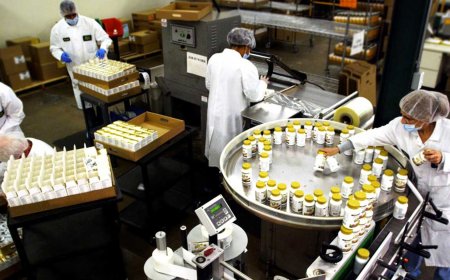Understanding Protein Ubiquitination and Cellular Health
In the bustling city of the cell, proteins are the tireless workers. They build structures, carry messages, and catalyze the chemical reactions essential for life. But a protein's job isn't static. Its function, location, and even its lifespan are tightly controlled by a series of modifications. Among the most versatile and critical of these isProtein Ubiquitination, a process that acts like a cellular "post-it note," telling a protein what to do, where to go, or when it's time to be retired.
What Exactly Is Protein Ubiquitination?
At its core, ubiquitination is a type of Post-Translational Modification (PTM) where a small, 76-amino-acid protein called ubiquitin (Ub) is attached to a target protein. This isn't a simple, one-step affair. Its a sophisticated, three-tiered enzymatic cascade:
- Activation (E1):An E1 activating enzyme uses energy (ATP) to "prime" a ubiquitin molecule, making it ready for transfer.
- Conjugation (E2):The activated ubiquitin is then handed off to an E2 conjugating enzyme.
- Ligation (E3):The E3 ligase is the true matchmaker. It recognizes a specific target protein and facilitates the final transfer of ubiquitin from the E2 enzyme to that protein. The human genome contains hundreds of different E3 ligases, each responsible for selecting a specific set of proteins, ensuring incredible specificity.
The "message" on this molecular post-it note depends on how the ubiquitin is attached. A single ubiquitin molecule (monoubiquitination) might act as a signal to change the protein's location or activity. More complex signals are created when multiple ubiquitin molecules are attached to each other, forming a chain (polyubiquitination). The linkage of this chain determines its meaning. The most well-known, the K48-linked chain, is the classic "kiss of death," marking the protein for destruction by the cell's recycling plant, the proteasome. However, other chains, like the K63-linked one, send non-destructive signals involved in crucial processes like DNA repair and immune signaling.
Why Is This Process So Important?
The versatility of the ubiquitin code makes it a master regulator of cellular life. It plays a pivotal role in:
- Protein Quality Control:It ensures damaged or misfolded proteins are swiftly removed before they can cause harm.
- Cell Cycle:It controls the rise and fall of key proteins that guide a cell through division.
- Immunity:It helps orchestrate the signaling cascades that activate our immune defenses against pathogens.
- DNA Repair:It signals to the cellular machinery that DNA has been damaged and needs fixing.
When this intricate system falters, the consequences can be severe. Dysregulation of ubiquitination is a hallmark of numerous human diseases, including many cancers, neurodegenerative disorders like Parkinson's and Alzheimer's, and autoimmune conditions.
How We Study the 'Ubiquitome': Ubiquitinated Proteomics Analysis
Given its central role in health and disease, understanding which proteins are ubiquitinated, when, and how, is a major goal for researchers. This is the domain ofUbiquitinated Proteomics Analysis. The challenge is that ubiquitinated proteins are often present in very low amounts, making them difficult to detect in a complex mixture of thousands of other cellular proteins.
Modern proteomics employs a powerful strategy to overcome this:
- Enrichment:The first step is to "fish out" the proteins of interest. Using specialized tools like antibodies that recognize the unique signature left after ubiquitin digestion (the "di-glycine remnant" or K-GG motif), scientists can selectively isolate ubiquitinated peptides from a cell lysate.
- Mass Spectrometry (LC-MS/MS):This enriched sample is then analyzed by liquid chromatography-tandem mass spectrometry (LC-MS/MS). This highly sensitive technique measures the mass of the protein fragments, allowing for their precise identification and even pinpointing the exact site of ubiquitination.
- Bioinformatics:Powerful software is used to interpret the vast datasets generated by the mass spectrometer, identifying thousands of ubiquitinated proteins and creating a comprehensive map of the cell's "ubiquitome."
By revealing the intricate landscape of protein ubiquitination, researchers can identify novel drug targets and potential biomarkers for disease. This powerful analysis is not just expanding our fundamental understanding of the cell; it is actively paving the way for the next generation of diagnostics and therapeutics.





































